My penchant for Scandinavian boatbuilding techniques once prompted Matt Murphy at WoodenBoat to tell me that it seemed as though I was trying to “get in touch with my inner Viking.” But when I look around, I see that I am hardly alone. Some aesthetics—think of Japanese architecture, Italian stonework, New England barns—have universal appeal and compel respect, and the double-ended Norse boats are in that world-class league. The fact that thousand-year-old workboat designs are widely influential even for modern plywood glued-lapstrake small craft is a marvel to me. One of the very encouraging trends in this direction is that a company specializing in the production of kit boats—most of them kayaks—has turned to Scandinavia for inspiration, too.The boat I’m thinking of is the Skerry design by John Harris at Chesapeake Light Craft. Like other companies offering prefabricated kits for lightly planked plywood boats, CLC got its start in another great boat inspired by antiquity—the kayak. The widespread success of kayaks is no surprise—no other boat gets more use, since they’re so easily transported on a cartop and can be quickly launched in a wide variety of settings. Fifteen minutes after getting home from work, you can be on the water. But even for diehard kayakers, there’s a certain appeal in having the ability to sit up in a boat and move around a bit or to carry another person and some gear that needs to be easily accessible during the trek. And, why not let the wind do the work sometimes? A simple rig and a pleasing hull shape inspired by Scandinavian types make the Chesapeake Light Craft Skerry an easy daysailer to take out for coastal explorations.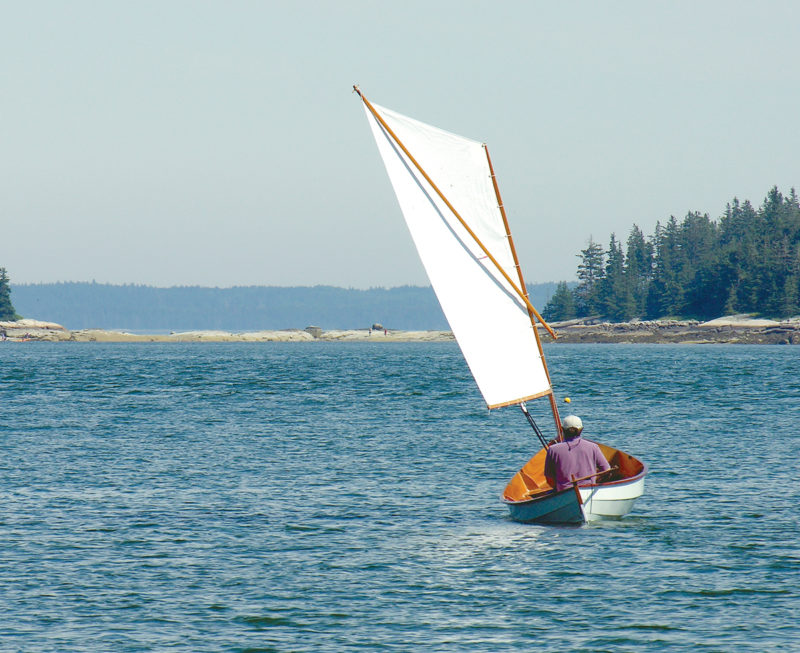 Photo by Corinne Ricciardi
Photo by Corinne Ricciardi
Join The Conversation
We welcome your comments about this article. To include a photo with your remarks, click Choose File below the Comment box.


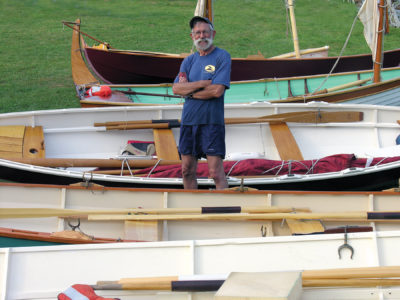
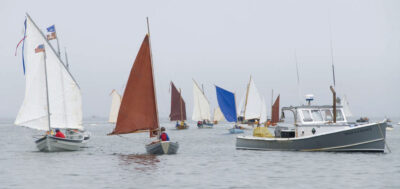
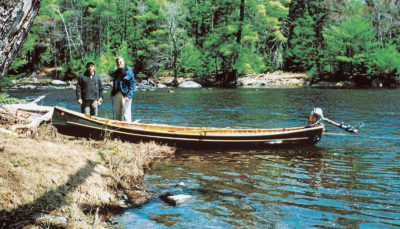
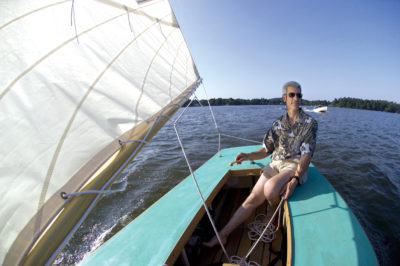
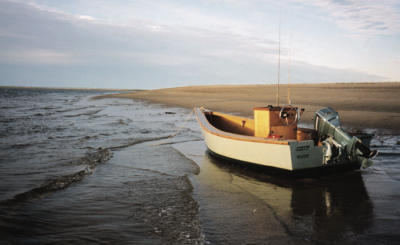
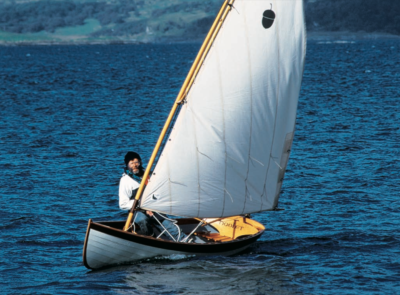
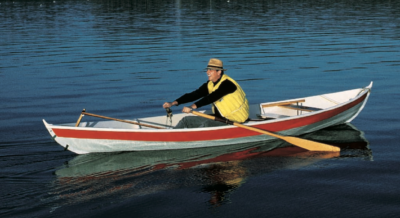
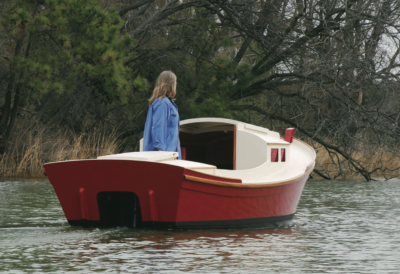
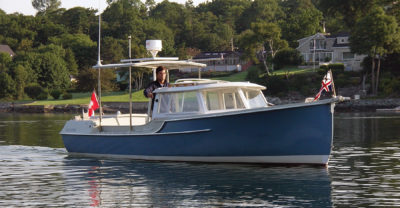
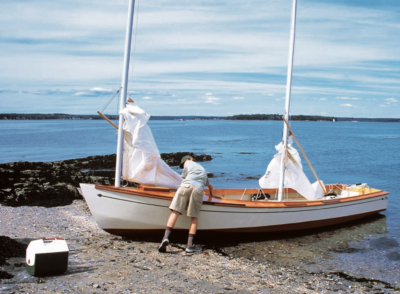


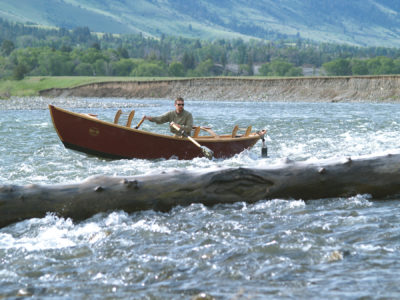
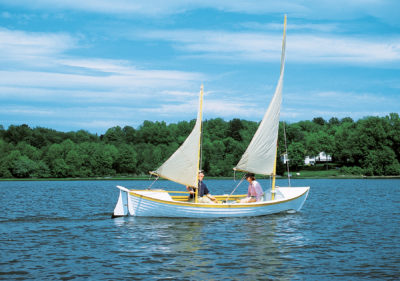

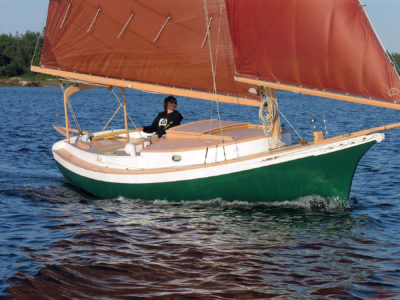
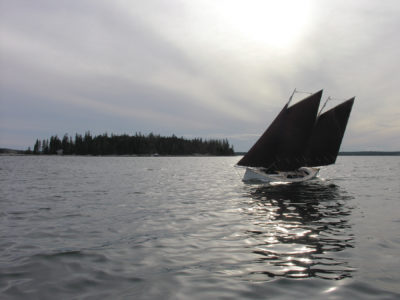
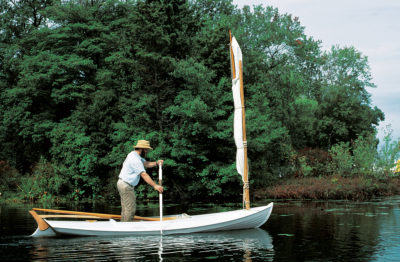
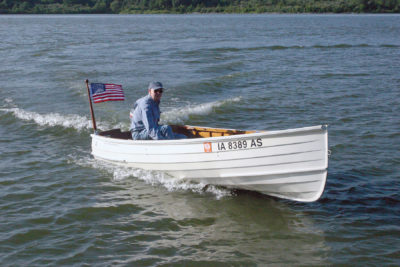
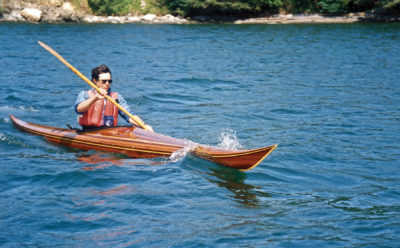
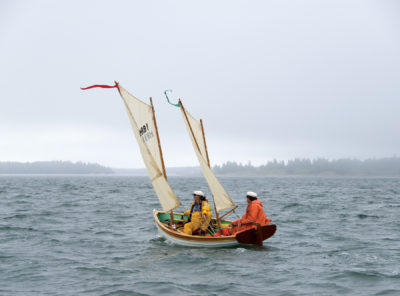
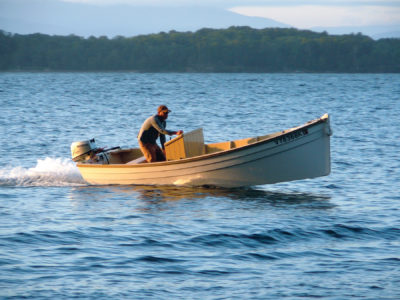
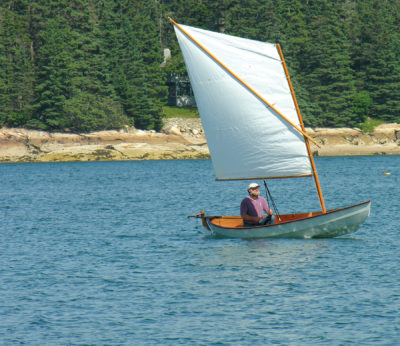

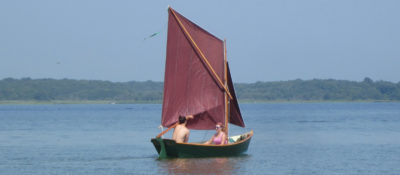
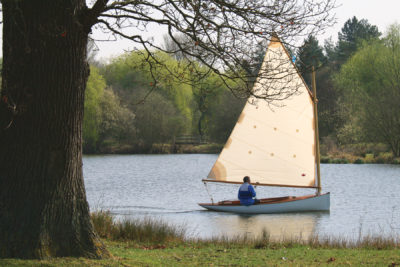
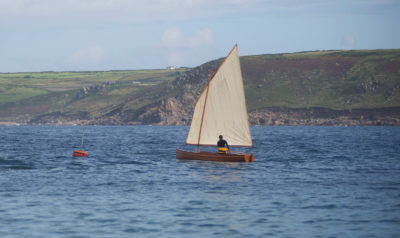
It is a pretty hull, but to me the sail plans leave much to be desired. I’d like to see it with a small dipping lug – a lot prettier. You’d need to move the partner aft a bit, but it might be a fun rig to handle and perhaps not too hard to manage if one kept it small enough.
Without depth of analysis, I’m inclined to think the 15′ Skerry of 57 sq ft sail area would’ve improved by incorporating the 13.5′ Lighthouse Tender Peapod‘s rig of 95 square ft. The Skerry is a great boat but the Skerry’s daggerboard might be improved with the LHT’s centerboard.
Having built a Jimmy Steel peapod at WoodenBoat School, I’m partial to the Tender’s peapod heritage. A Tender vs a Skerry with the Tender’s sail might cause a good deal of back-and-forth consideration, but either would be a great choice.
I built the balanced lug version of the Skerry in 2017 and have sailed about 100 hours on the boat so far, all solo. I lead the downhaul down through a small hole in the port side of the front deck to a block, from there to a cleat between the middle and aft thwart on the port gunwale. Same with the halyard, led to a cleat on the starboard gunwale. That way I rarely have to go forward of the middle thwart. I’ve been able to row, leaving the daggerboard in place; you just have to scoot forward a bit. To sail, I sit on the floor of the boat, facing forward, atop a cushioned mat, and lean back against a pillow lying against the front edge of the aft deck. The tiller is usually resting atop my right shoulder. Depending on the winds, I use extra ballast, in the form 10-lb to 15-lb dumbbells, placed in little compartments I’d built under the middle thwart and forward from there up to the mast step. Others I’ve seen use water bags. The Skerry is fast, both rowing and sailing. I use 8 1/2′ wooden oars and the rowing is pleasurable and worthwhile – as in, for the effort put in, you really do cover a lot of ground, fast. My set-up time, from time of arrival at boat ramp with boat on trailer, to put-in, is about 35 minutes, as long as I don’t dillydally. I use a typed checklist to be sure I’ve got everything, and a second checklist for launching. A lot of little steps. All much worthwhile for a day spent on the water with a boat you’ve built that’s a sight to see and a pleasure to sail & row.
The beauty of this particular design by John Harris is the versatility it offers. I’ve had a balanced-lug Skerry since 2015.
It has been sailed and rowed extensively in the Pacific Northwest, in fresh, salt, and some “interesting” weather conditions. It’s been trailered and car-topped. Self-rescued from a capsize. It was double rowed and portaged on the Bowron canoe circuit. Towed as a tender through the San Juan’s.
There are many small boat designs that would out perform the Skerry at one or two of these tasks. The Skerry has proven to be fast and trustworthy through all of them. It has handled everything I’ve thrown at it with style and grace.
I became the proud owner of a skerry a couple of weeks ago. Imagine my delight in seeing it highlighted in this month’s Small Boats newsletter!
I haven’t been out in it many times yet but I’m already delighted with my new little vessel here in the waters of Casco Bay. The balanced lug (not pictured in the article) has been delightfully, refreshingly simple to sail and does well in light air.
There’s no denying her “plywoodyness” but she’s still a smile factory.
Cheers